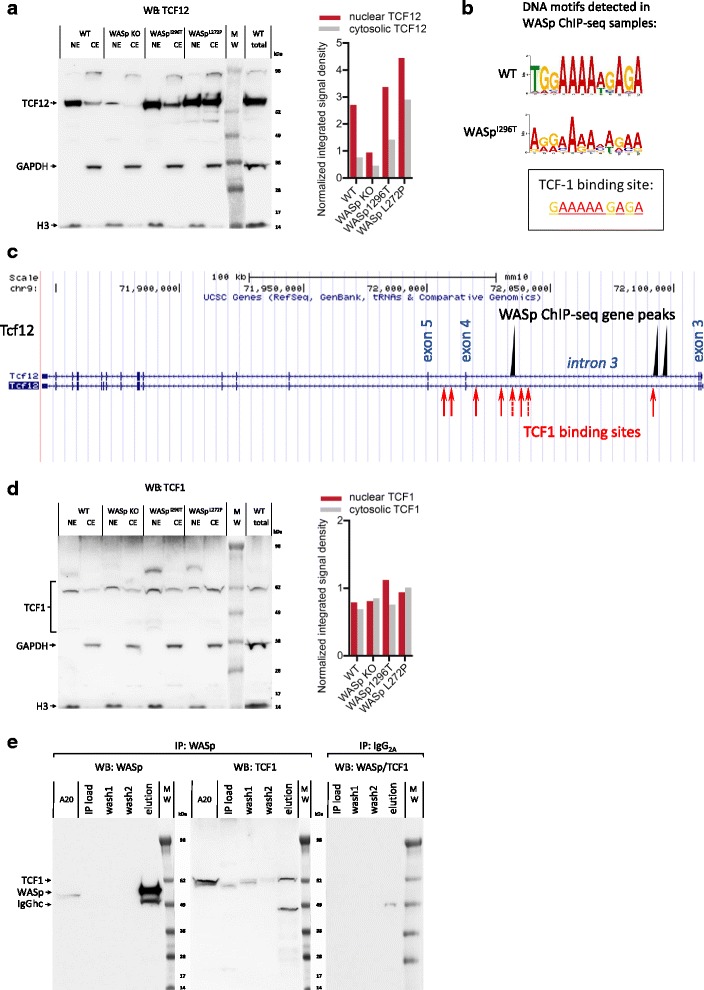Fig. 6.

The activation status of nuclear WASp affects TCF1-mediated Tcf12 expression. a TCF12 in NE and CE from WT, WASp KO, WASpI296T, and WASpL272P thymocytes. These data were repeated twice with independent biological replicates. Detection of GAPDH was used as a sample loading control for total lysate and for cytosolic extract. Detection of histone H3 was used as a sample loading control for total lysate and for nuclear extract. The quantification of nuclear and cytosolic TCF12 in the western blot is shown in the right panel. b Consensus DNA motif determined by WASp ChIP-seq data analysis and the canonical TCF1 DNA-binding site. c Proximity of WASp ChIP-seq gene peak positions and TCF1-binding sites in Tcf12 intron 3. d TCF1 in NE and CE from WT, WASp KO, WASpI296T, and WASpL272P thymocytes. These data were repeated twice with independent biological replicates. Detection of GAPDH was used as a sample loading control for total lysate and for cytosolic extract. Detection of histone H3 was used as a sample loading control for total lysate and for nuclear extract. The quantification of nuclear and cytosolic TCF1 in the western blot is shown in the right panel. e Co-IP of WASp and TCF1 from thymocyte nuclear extracts. These data were repeated three times with independent biological replicates. Purified mouse IgG2A was used as the isotype Ab-negative control IP. Heavy chain of IgG (IgGhc) is observed in eluted IP samples. Additional file 1: Figure S6 and S7 and Additional file 4
